Frightening or fascinating? Perth Children’s Hospital takes the nightmare out of hospital visits, inviting curiosity and play into its life-changing spaces.
November 29th, 2019
How, as an adult, do you design a hospital from a child’s perspective? That was the question lingering in the minds of the team behind Perth Children’s Hospital: JCY Architects, Cox Architecture and Billard Leece Partnership (BLP) with HKS Inc. Aware of just how daunting a hospital visit can be – particularly for a sick child – the designers sought to reduce anxiety by visualising spaces through the eyes of young patients, and by grounding the architecture in its distinctly Western Australian surroundings.
The hospital sits on the south-western edge of Kings Park, a site dominated by native bushland. The park’s prevailing grassy palette served as inspiration for the façade of the building, whose blueprint is based on a petalled stem. The hospital’s interior, meanwhile,
references the “bursts of colourful wildflowers that sweep through Western Australia each year”, says Mark Mitchell of BLP. Rather than saturate the space in childlike primary hues, the team “used colour sparingly”, says Cox Architecture’s Fernando Faugno, “as both a means of wayfinding and as an element of surprise that provides moments of distraction and reduces levels of anxiety.”
Sculptural coloured objects denote both decision-making points and destinations, helping visitors to locate lifts, reception desks, waiting zones, play areas and staff stations. Bold colourful distractions, meanwhile, include graphic elements that appear on the walls in patient corridors.
It’s well documented that bright, contrasting colours are more distinguishable than duller tones in a youngster’s field of vision, so a cheerful interior palette hardly qualifies as radical child-oriented design. The designers took things a step further, however, assessing every element from a youthful vantage. From lowered Pedrali seating to visual cues at a child’s eye level, the team’s various interventions may even be overlooked by adults.
Getting into underage character required “talking and listening, researching and watching, and a bit of creativity and imagination”, says Mitchell. “Firstly, we had to remember that children are not just mini-adults. Their bodies are proportioned very differently and they generally see the world from a different angle than the average adult. They may be more fascinated by what is on the floor than on the wall.” Accordingly, ceilings at Perth Children’s Hospital have also become canvases, serving as a diversion for those being wheeled around on trolleys.
“Children also have a very different life experience,” continues Mitchell. “They may not have developed a language for expressing themselves verbally; they may not know how to identify their pain; they may need a parent nearby to feel safe. Through our own experiences as well as consultation with staff and patients, we tested a number of concepts that were deliberately child-focused. We created play nooks that are easier to get into if you are smaller, and we made sure the fun parts of each room were accessible from a low height, while the parts that may cause anxiety were well hidden.” The designers also masked medical equipment, diminishing its scale through the bold co-mingling of colour and built form.
The project highlights one of the most distinct differences between child and adult healthcare facilities: in the former, the patient’s support network plays a more active role in the care process. Perth Children’s Hospital is therefore designed with family members in mind. “There’s an incredible sense of play throughout the public and clinical zones,” says BLP’s Tonya Hinde, “so that siblings and friends can also enjoy the hospital experience.”
Likewise, bedrooms revolve around family. “Parents will commonly stay overnight in the patient’s room to comfort their child and participate in the caring process,” says Mitchell. Envisaging bedrooms as blank canvases, the designers ensured families could personalise their space and surround a child with familiar objects.
“A hospital experience can be frightening or it can be fascinating,” says Hinde. “It’s up to us as designers to vary the internal landscape so that apprehension can be replaced with discovery and adventure. There’s just no reason why a hospital environment should be dull.”
This project received an Honourable Mention in The Wellness category of the 2019 INDE.Awards, and also appeared in Issue #75 of Indesign magazine.
INDESIGN is on instagram
Follow @indesignlive
A searchable and comprehensive guide for specifying leading products and their suppliers
Keep up to date with the latest and greatest from our industry BFF's!

Merging two hotel identities in one landmark development, Hotel Indigo and Holiday Inn Little Collins capture the spirit of Melbourne through Buchan’s narrative-driven design – elevated by GROHE’s signature craftsmanship.
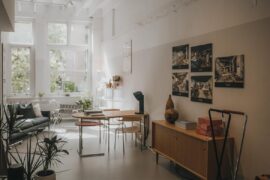
Sydney’s newest design concept store, HOW WE LIVE, explores the overlap between home and workplace – with a Surry Hills pop-up from Friday 28th November.
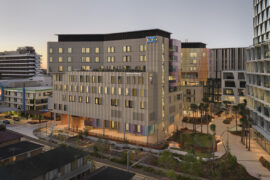
BLP’s new Sydney Children’s Hospital, Randwick building brings together paediatric care, family-centred design and Australia’s first Children’s Comprehensive Cancer Centre in a major addition to the Randwick Health & Innovation Precinct.
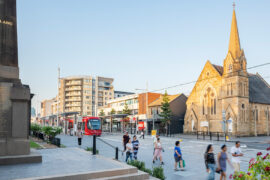
Australia’s first planted light rail corridor sets new benchmark for transport-led urban transformation.
The internet never sleeps! Here's the stuff you might have missed
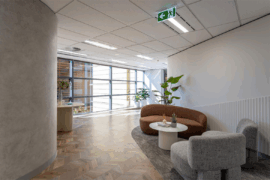
A thoughtful, low-waste redesign by PMG Group in collaboration with Goodman has transformed a dated office into a calm, contemporary workspace featuring a coastal-inspired palette and Milliken flooring for a refined finish.
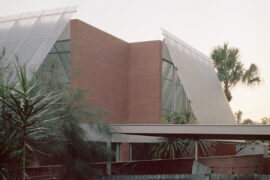
With 26 shortlisted homes, a 13-member jury and four standout winners, the 2025 Habitus House of the Year program wrapped up last night in Sydney with Winnings.